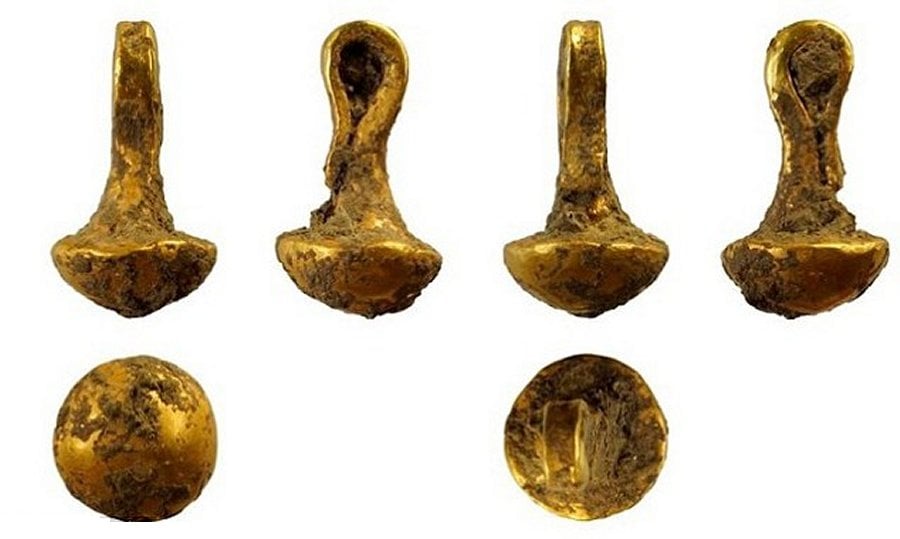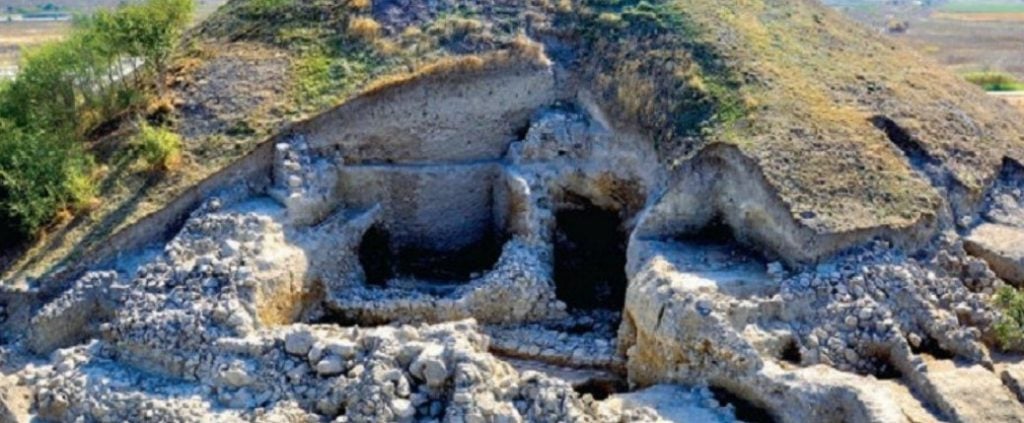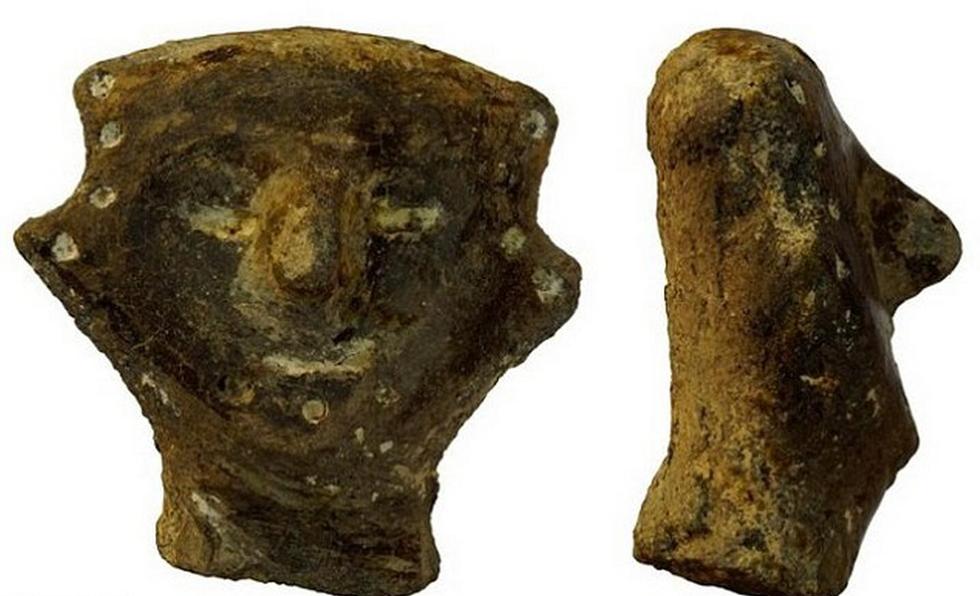Art World
6,600 Year Old Golden Pendant Discovered in Bulgaria May Be the World’s Oldest Jewelry
The area is thought to have been home to a complex ancient society.

The area is thought to have been home to a complex ancient society.

Amah-Rose Abrams

Archaeologists in Bulgaria have discovered what is thought to be the world’s oldest piece of jewelry. The 24-carat, simple gold pendant, dated 4,300 BC, was discovered in the prehistoric Solnitsata settlement in Varna, Bulgaria.
Professor Vassil Nikolov of Bulgaria’s National Institute of Archaeology led the team who discovered the ancient two-gram adornment.

Is this the world’s oldest piece of jewelry? Photo courtesy of the Bulgarian Academy of Sciences.
“What’s interesting regarding the gold jewel that we have found now is that it wasn’t discovered inside one of the graves but between them, which might testify to some kind of a more special ritual,” said Professor Nikolov to Cherno More agency.
Another discovery of gold pieces was found at a second necropolis in Varna in 1972. This latest discovery has led Nikolov to believe that the entire area of Northern Bulgaria used to be home to a complex prehistoric society.

The Bulgarian necropolis of Solnitsata. Photo courtesy of the Bulgarian Academy of Sciences.
“There used to be a highly developed civilization on these territories. It was concentrated in two locations,” explains Nikolov. “There was a major center for the processing of copper and gold near the Varna lakes, and here, in the prehistoric settlement Solnitsata, there was the extraction of salt. This society developed for about 200-300 years.”
It is thought that this society is one of the first to figure out how to process gold. The pendant itself is believed to have been worn by a man or woman denoting high social standing.

Bone carved idols discovered at the Bulgarian necropolis of Solnitsata. Photo courtesy of the Bulgarian Academy of Sciences.
As well as the golden pendant, archaeologists also discovered carved idols, weaponry and evidence that the prehistoric residents of this region of Bulgaria also drank cow’s milk long before any other ancient society. It is also thought that the salt mined at Solnitsata may have been used as an early form of currency before the use of metals came into practice.
Whether or not the prehistoric inhabitants of Bulgaria used this practice, the Romans, adopted this system many centuries later giving us the word “salary.”

Archaeologists conducting the excavations at the Salt Pit have found lots of arrow tips and a spear, bone decorations, and an intact bone idol which could become an emblem of the Bulgarian town of Provadiya. The arrow tips and the spear found near the fortress wall mean that the place was a battle arena. Photo courtesy of the Bulgarian Academy of Sciences